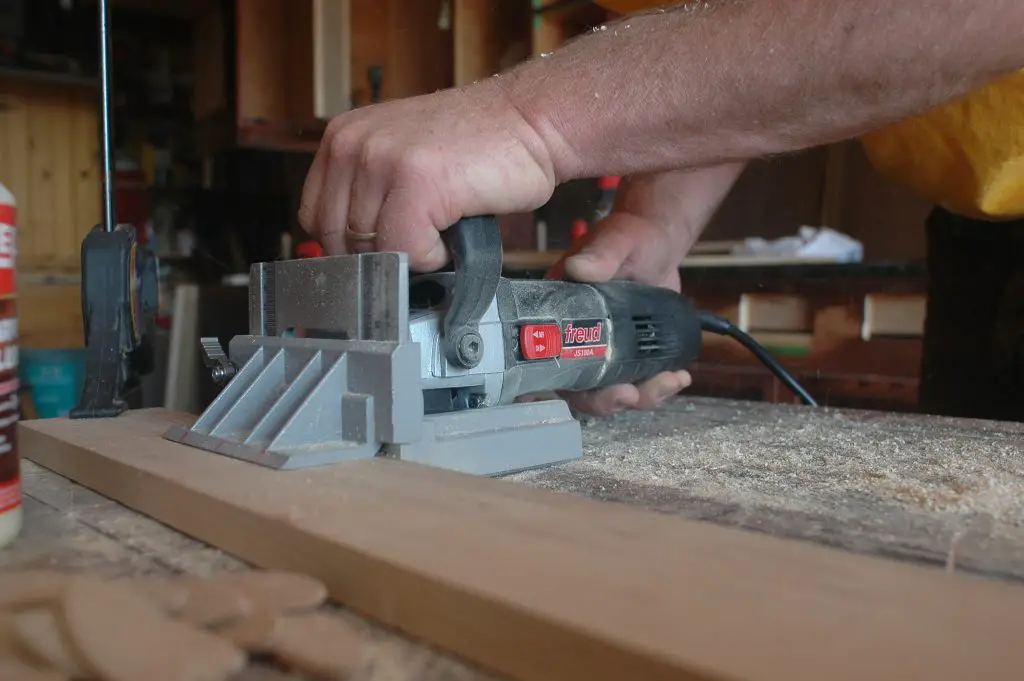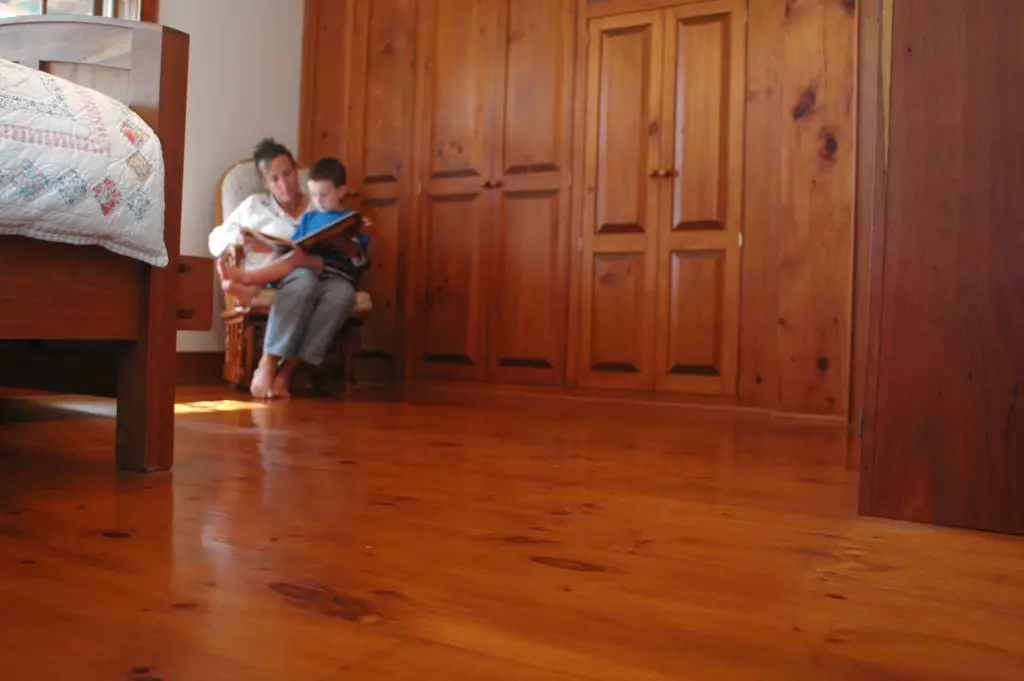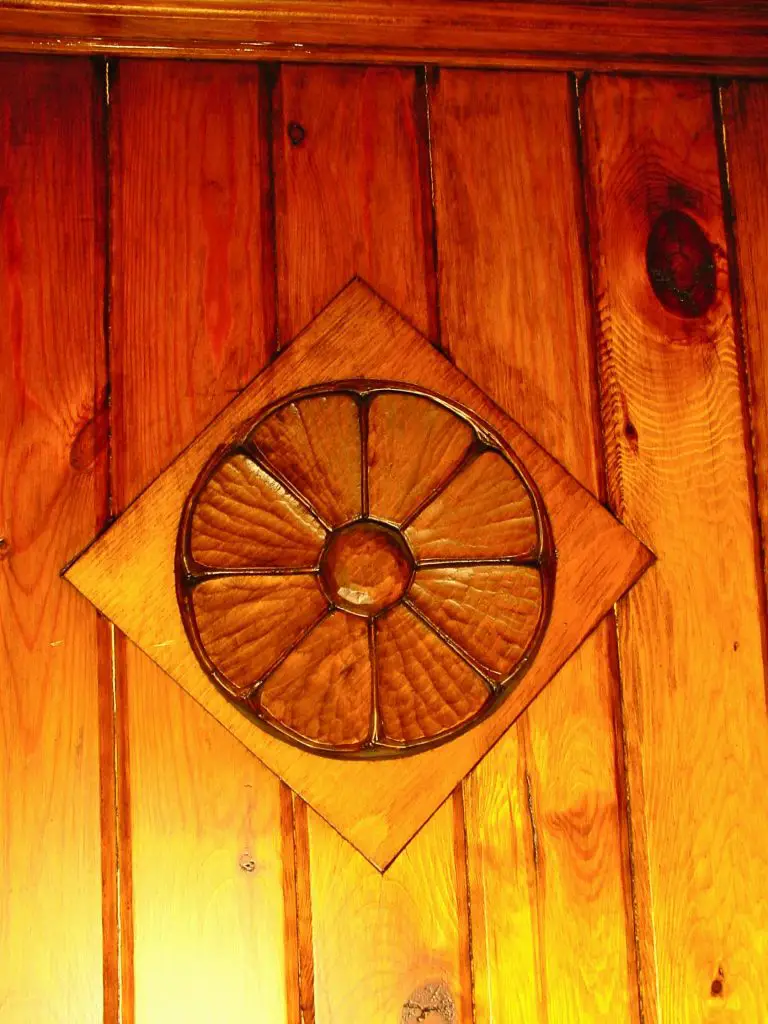
If you’re a woodworker but have never tried biscuit joinery, you should definitely read this article and watch the accompanying video. Biscuit joinery is one of my favourite options for joining wood, and this usefulness goes beyond just building furniture. Biscuits can also make interior house trim easier to install and more beautiful. Let me start with a little history . . .
- Reading Time = 6 minutes
- Video Watch Time = 27 1/2 minutes
How Biscuit Joiners Began
When Swiss cabinetmaker Hermann Steiner invented the biscuit joiner back in 1955, he probably couldn’t imagine it would have so much to offer discerning woodworkers 50 years later. Popularity of this hand-held power tool has blossomed since the 1980’s, after patent protection on Steiner’s concept expired and prices dropped significantly. Biscuit joiners are now made by all major power tool manufacturers, revolutionizing the way wood can be joined. What’s less well known is the way biscuit joinery can improve the appearance, efficiency and durability of woodwork and trim in new homes and renovations. The benefits are worth a look, but before I explain those, check out the video tutorial on biscuit joinery basics below.
What Are Biscuits?
In the world of woodworking, the term “biscuit” refers to oval-shaped pieces of factory-compressed hardwood. They’re designed to fit into curved slots of standard size cut by the spinning, circular blade of hand-held biscuit joiners, like the one you see below. Cut matching slots on adjoining pieces of wood, brush some glue inside the slots, then assemble the joint with a biscuit filling the slots. This is the biscuit joinery proposition in a nutshell, and it’s really a streamlined method for creating what amounts to small mortise and tenon joints. But as you’ll see, the usefulness of this approach goes beyond just fine woodworking.

Biscuit Joinery Basics

Standard woodworking biscuits come in three sizes: #0, #10 and #20. They’re typically made of hardwood — usually beech — with a diagonal grain orientation to preserve strength both along and across the biscuit. Wooden biscuits are factory-compressed, too, enabling them to expand as they soak up water based glue within a newly assembled joint. This feature tightens the biscuit-to-wood fit, making for an even stronger connection.
Take a look at how residential projects come together and you’ll notice a pattern. The further along you progress towards completion, the more refined the skills required for success. Fifty tonnes of dirt can be removed from a basement hole in one morning with a backhoe, while you might spend the same amount of time installing fifty ounces of trim around a fireplace mantelpiece on the final day of your renovations. And as you work from coarse to fine like this, the tasks involving wood become more and more like fine cabinetmaking and less and less like rough framing. The biscuit joiner shines on building sites as a tool to span the gap between these two realms, and it can lead to better results much more quickly than any other tool.
The high-stress joints found on built-in bookcases, cabinet doors, frames and matching mirrors need more than just glue to hold them together. They need something mechanical, and there are three particular applications where biscuit joinery makes the most sense.
Application#1: Pre-Joined Trim Frames

Over the last 25 years, interior trim has become more beautiful, more intricate and more challenging to install. But one of the perennial difficulties involves installing trim piece-by-piece over the often-irregular surface of drywall. You cut a length of trim, run to the wall, see if it fits, then run back to the saw to cut another one. And there are often enough irregularities where finished wall surfaces meet door and window jambs that it can be difficult and time consuming to create permanent, gap-free joints. This is especially true on stained trim, where filling botch-ups after installation isn’t possible as it is before paint.
You can side-step all of these problems by joining trim into frames ahead of time, then finishing them before the wood goes up. The job does require large bar clamps and a flat place to work, but the trim installation goes much more quickly. And perhaps best of all, joint gaps will never open up in time. Biscuit joints stay together forever. Click here for more details on succeeding with trim frames.
Application#2: Biscuited Built-Ins

The rediscovery of built-in wooden shelves and storage closets in today’s new construction is one of the welcome advances that have come to the trade, and biscuit joinery can help here more than most other places. And the advantage really becomes apparent when it comes to finishing these items.
Putting urethane on the inside of built-in cabinets, wardrobes and shelves is one of the worst jobs on any building jons. Fumes get concentrated in the small, enclosed space, drips of varnish fall into your eyes, and you can’t see the runs you’ve caused until it’s too late. Biscuit joinery eliminates these hassles by allowing parts to be prefinished before assembly.
Cut the sides, tops and bottoms you need for all built-ins (veneered plywoods are an excellent choice), finish the interior surfaces when they’re flat and accessible sitting on sawhorses, then cut biscuit slots right through the new finish when it’s dry. Brush glue into these slots, push biscuits in place, then assemble the joints under clamping pressure. Not only have you saved yourself hassle while getting better results, but any glue squeeze out is easily wiped off the prefinished wood surfaces. Try it once and you’ll never go back.
Application#3: Matching Motifs

I know a guy with the knack for taking undervalued older homes, fixing them up, then selling them for outrageous profits. He makes it work in any market, and his secret is simple. Style. People will pay for tasteful finishing touches in their homes out of all proportion to the cost of producing them. And this is especially true when it comes to woodwork put together efficiently and well using biscuit joints.
How about a mirror frame that matches bathroom window trim? Have you ever considered kitchen cabinets with the same molding motif that runs through the rest of the house? What about a simple footstool made out of the same pieces of cherry used as flooring? All these value-boosting options are now easier to realize than ever, thanks to biscuits.
While it used to be true that you needed to be an experienced cabinetmaker to make simple, matching pieces of furniture blend with the rest of a house, biscuit joinery reduces the skills level needed for success. Take a look and you might be surprised how much a little refinement and tool sophistication can help your next wood project.
 I hope you found this article and video useful. Please consider helping me cover out of pocket expenses for creating and publishing content like this. The “buy me a coffee” button below makes is fast, safe and easy to contribute. Thank you to everyone helping out. Much appreciated.
I hope you found this article and video useful. Please consider helping me cover out of pocket expenses for creating and publishing content like this. The “buy me a coffee” button below makes is fast, safe and easy to contribute. Thank you to everyone helping out. Much appreciated.
– Steve Maxwell



